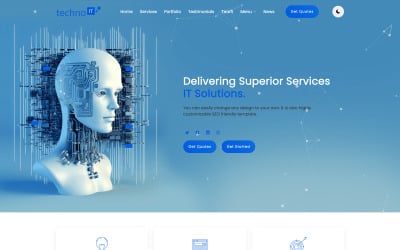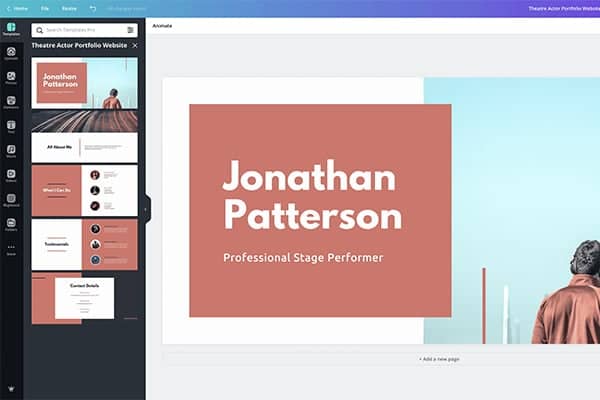The Ultimate Overview to Modern Site Style Trends
In the ever-evolving digital landscape, contemporary site style fads play a critical role in shaping customer experience and involvement. From the rise of minimalist style principles that focus on simplicity to the effect of bold typography in defining brand name identification, each element adds to a cohesive on-line visibility. The focus on responsive and mobile-first methods, alongside innovative microinteractions, even more enhances usability. Additionally, the growing focus on sustainable web design practices reflects a dedication to ecological responsibility. These fads collectively increase vital inquiries about the future of efficient internet style and what it suggests for consumers and organizations alike.
Minimalist Design Principles
Minimal style principles stress the concept that much less is a lot more, promoting for simplicity and functionality in aesthetic communication. This method remove unneeded aspects, concentrating rather on necessary components that convey the desired message properly. By prioritizing quality, minimal design improves customer experience, enabling site visitors to browse sites effortlessly.
Core tenets of minimalist design include the usage of ample white area, which develops a sense of equilibrium and company. This negative area not just directs the customer's attention to crucial elements however likewise cultivates a calming visual ambience. Furthermore, a minimal shade palette is typically utilized, making use of monochromatic plans or soft hues to keep visual cohesion and avoid frustrating the customer.
Typography plays a crucial role in minimalist layout, where understandable font styles are picked for their simpleness and efficiency in communicating content. Ultimately, minimal layout concepts grow a focused setting that encourages customers to engage with the web content, boosting the total performance of modern website design.
Strong Typography Options
Embracing vibrant typography options has actually come to be a defining characteristic of contemporary website layout, as it successfully captures interest and conveys strong messaging. Developers are significantly utilizing typography not simply as a useful aspect but as a vital aesthetic component that improves the total aesthetic and customer experience.

Furthermore, the juxtaposition of vibrant typography with minimal design concepts enables for striking contrasts, improving readability while preserving visual allure. Using whitespace around strong message further stresses its importance, making sure that the message resonates with the audience.
As electronic landscapes end up being extra affordable, leveraging vibrant typography allows brands to separate themselves and leave a long-term perception. The cautious option of typefaces and their application can evoke emotions, establish tone, and drive activity, making vibrant typography a vital device in modern-day web site style. Inevitably, it is a powerful means to enhance narration and ensure that essential messages are not just seen but additionally felt.
Receptive and Mobile-first Design
Mobile-first and responsive style has actually emerged as an important principle in modern-day web site growth, mirroring the increasing dependence on smart phones for accessing on-line material. As customer actions shifts towards mobile browsing, developers have to focus on developing experiences that adjust perfectly across various screen dimensions and resolutions.
A responsive layout guarantees that a web site immediately adjusts its design, pictures, and functionality based on the tool being utilized. Mobile-first design supporters for creating websites originally for smaller displays, subsequently scaling up to larger display screens.
Applying receptive and mobile-first concepts not only deals with user choices but additionally lines up with search engine optimization (SEO) techniques. Significant internet search engine, like Google, prioritize mobile-friendly websites in their positions, making it vital for businesses to take on these layout techniques. In an affordable electronic landscape, welcoming mobile-first and responsive layout is not just a choice; it is crucial for making sure availability and interaction with a varied audience.
Engaging Microinteractions
Microinteractions play a crucial role in improving individual interaction and total internet site experience, specifically in the context of responsive and mobile-first design. These subtle style components supply prompt responses to users, making interactions more enjoyable and user-friendly. Instances consist of switch computer animations, alert informs, and filling indicators, which not only overview customers yet likewise produce a feeling of connection with the user interface.
Integrating interesting microinteractions can navigate to this website significantly improve use by reducing cognitive tons. When individuals obtain visual or acoustic responses useful reference upon executing activities, such as clicking a button or submitting a kind, they feel extra certain in their selections. This promotes a smoother navigation experience, inevitably boosting individual retention.

As internet site design trends proceed to advance, the significance of microinteractions can not be overstated. They offer as the subtle yet effective touchpoints that transform normal interactions right into remarkable experiences, consequently raising the total efficiency of contemporary internet design.
Lasting Website Design Practices
Lasting internet design practices are becoming increasingly crucial as the digital landscape expands and environmental issues climb. Designers and developers are identifying their responsibility to produce sites that not only offer customer requirements but additionally reduce ecological effect. This approach encompasses numerous vital techniques.
First of all, optimizing energy intake is critical. Websites should be made to load quickly and efficiently, which lowers server power use and improves individual experience. Methods such as picture compression, minimizing HTTP demands, and utilizing modern coding techniques add significantly to this goal.
Second of all, choosing green holding providers is important - website design. Several hosting companies are now powered by renewable power sources, allowing web sites to operate in a more lasting manner. This selection shows a dedication to lowering carbon footprints
In official source addition, adopting a minimal layout can boost sustainability. Fewer elements on a page lead to less data transfer, which not just accelerates packing times yet also saves sources.
Lastly, promoting digital accessibility guarantees that sites reach a bigger audience without unneeded bloat, straightening individual experience with ecological obligation. By incorporating these sustainable methods, web designers can add favorably to both user involvement and the planet's well-being.
Final Thought
In recap, contemporary website layout patterns emphasize the integration of minimal principles, bold typography, and responsive style to improve customer experience. Engaging microinteractions add to memorable communications, while lasting techniques support for environmentally aware advancement. Collectively, these components not only boost aesthetic charm but additionally enhance performance, ensuring that internet sites are both aesthetically striking and user-friendly. Adopting these fads is vital for creating impactful electronic experiences that resonate with users in a significantly affordable online landscape.
In the ever-evolving digital landscape, modern internet site style trends play a vital role in shaping customer experience and involvement. By focusing on clearness, minimalist layout improves individual experience, allowing visitors to navigate internet sites easily.
Inevitably, minimalist design concepts grow a focused setting that encourages users to involve with the content, enhancing the general efficiency of modern-day internet site layout.Microinteractions play a crucial function in improving customer interaction and total website experience, especially in the context of responsive and mobile-first design.In recap, modern web site layout trends emphasize the assimilation of minimalist concepts, vibrant typography, and receptive design to enhance user experience.